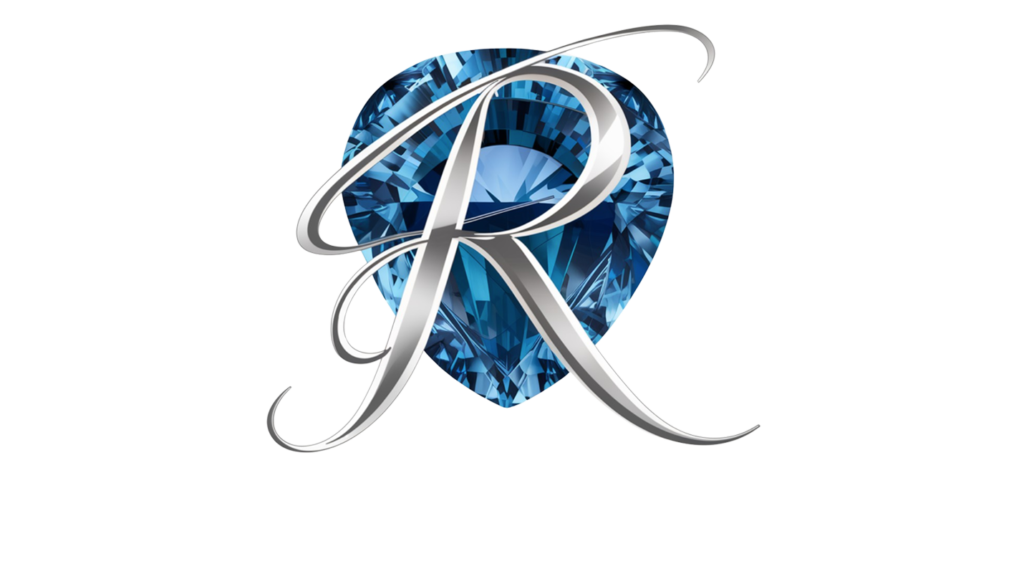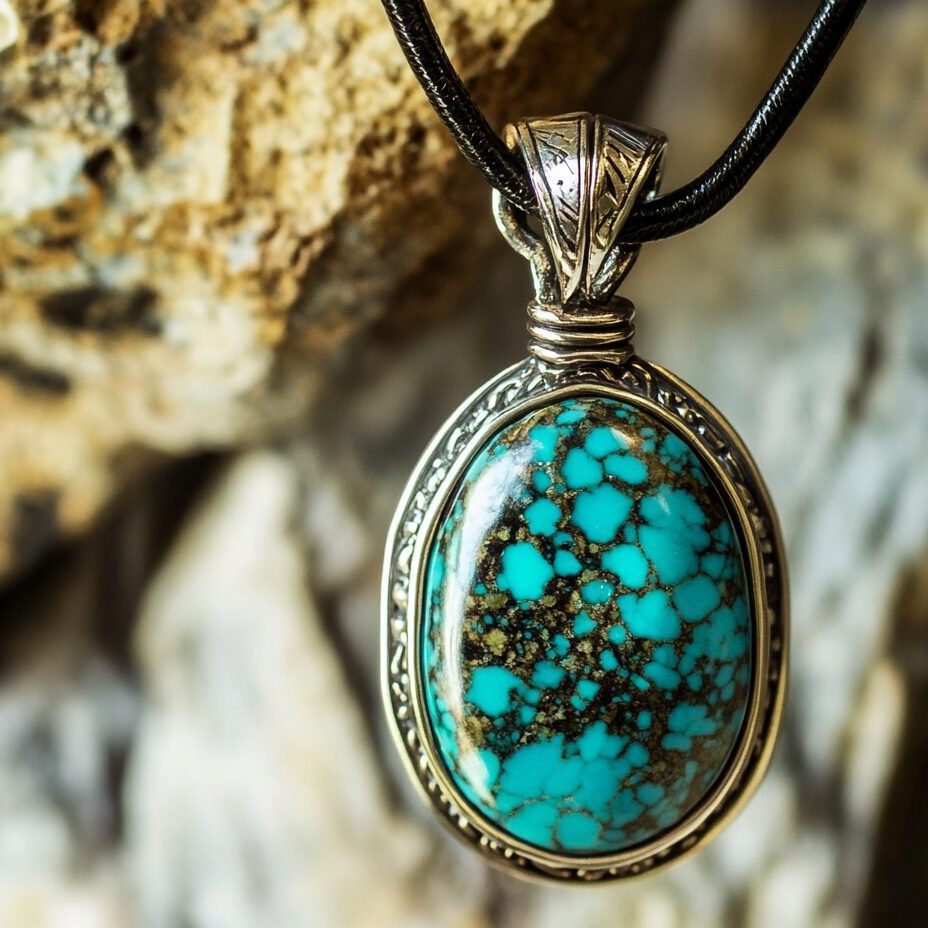
How to Identify Real Turquoise Stones: A Beginner’s Guide to Spotting the Genuine Gem
Turquoise is one of the world’s most admired gemstones, cherished for its distinctive blue-green hues and spiritual symbolism. For centuries, it has been revered by Native American tribes, ancient Egyptian pharaohs, and Persian royalty alike. But as demand for turquoise increases, so do the fakes, mass-produced imitations made from dyed stones, plastic, or compressed fragments that look like turquoise but lack its natural properties and value.
So how can you tell if the turquoise you’re buying is real? Whether you’re a collector, jewelry maker, or simply someone looking for an authentic piece, learning how to identify real turquoise is a valuable skill that will help you avoid costly mistakes.
Let’s explore what real turquoise is, what makes it different from the imitations, and how you can tell the difference whether you’re shopping in person or online.
What Makes Turquoise Real?
Turquoise is a naturally occurring mineral formed over millions of years through a reaction between copper-rich groundwater and surrounding phosphate and aluminum-bearing rocks. This chemical process takes place in arid environments, like the American Southwest or parts of Iran and China, where copper deposits are abundant.
The result is a gemstone that ranges in color from robin’s egg blue to rich greenish-blue, often with dark web-like veining known as a matrix. This matrix comes from the host rock in which the turquoise formed. Unlike synthetic or imitation stones, real turquoise is porous, relatively soft (ranking between 5 and 6 on the Mohs hardness scale), and naturally varied in color and pattern.
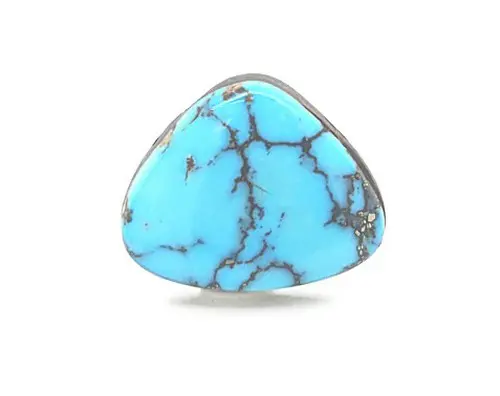
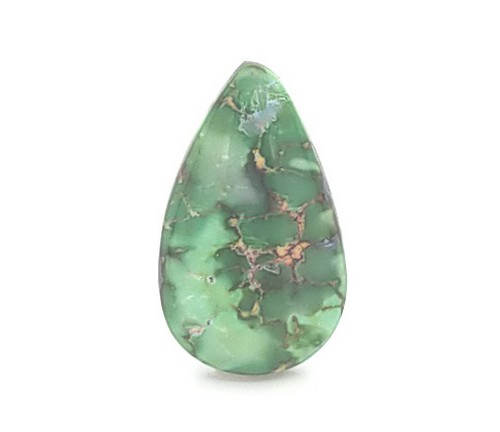
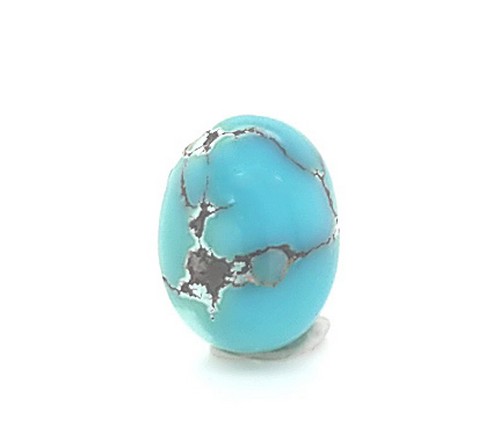
The Problem With Fake Turquoise
Today’s market is flooded with turquoise imitations some made from plastic, others from more affordable minerals like howlite or magnesite, which are dyed to resemble turquoise. At first glance, these fakes can be convincing, especially in jewelry where small stones are set in silver or gold.
But while imitation turquoise may look similar, it lacks the durability, history, and value of the real thing. These stones are often more brittle, may fade or crack over time, and simply don’t hold the same energy or prestige. For jewelry makers, accidentally selling fake turquoise can damage your brand. For collectors, buying a fake stone can feel like a betrayal.
Luckily, there are a few simple ways to test for authenticity, some you can try at home, and others that require only a careful eye and a little knowledge.
Evaluate the Price
One of the first indicators of authenticity is the price tag. High-quality turquoise is a semi-precious gemstone and often fetches a premium. It’s not unusual for even small cabochons of natural turquoise to cost over $100, especially those sourced from well-known mines like Sleeping Beauty or Kingman in Arizona.
If a seller is offering large amounts of “natural turquoise” at rock-bottom prices, that’s usually a red flag. Cheap turquoise is almost always fake or heavily dyed.
Look Closely at the Surface
Genuine turquoise will often have subtle imperfections. These include uneven color tones, veining from the host rock, and small pits or pores on the surface. The matrix in real turquoise looks embedded and random it shouldn’t look uniform or printed on. If the pattern seems too regular or the color looks overly perfect and glossy, there’s a good chance it’s not real.
Magnification can help. Use a loupe or magnifying glass to examine the stone’s surface and cracks. If you notice blue or green dye collected in these crevices, the stone is most likely a dyed howlite or another imitation.
Try a Gentle Scratch Test
Real turquoise is relatively soft but still harder than imitation materials like plastic or chalky minerals. Gently scratch the surface of the stone with your fingernail or a wooden toothpick. A real turquoise stone won’t show visible marks from such light contact. If it scratches easily or leaves residue behind, it’s probably not authentic.
Avoid using metal or sharp tools for this test, especially on finished pieces you don’t want to damage a stone that turns out to be real.
Use Acetone to Test for Dye
Another easy test involves using acetone, commonly found in nail polish remover, to determine whether the stone has been dyed. Dab a small amount of acetone on a cotton swab and gently rub it on an inconspicuous area of the stone. If any color transfers to the cotton or the surface lightens noticeably, you’re looking at a dyed imitation rather than true turquoise.
Perform a Heat Pin Test (With Caution)
For rough turquoise or bead strands where you suspect the stone may be plastic, you can use a hot needle test. Heat the tip of a sewing needle with a flame until it’s red hot, then gently press it into an inconspicuous part of the stone. If it melts, smokes, or smells like plastic, the piece is fake.
Note: This test can damage the stone and should only be used on inexpensive or questionable pieces not valuable cabochons or finished jewelry.
Ask About the Stone’s Origin
Authentic turquoise is often named after the mine it was sourced from. Well-known turquoise mines include Bisbee, Morenci, and Kingman in Arizona; Royston and Carico Lake in Nevada; and various deposits in Iran and Tibet.
Reputable sellers will typically share this information and may even provide certificates of authenticity. If a seller is vague about the stone’s origin, that’s a sign to proceed with caution.
Understand What “Stabilized” Means
Don’t be alarmed if a dealer tells you the stone is stabilized, this is a common treatment used to improve the durability of lower-grade turquoise. Stabilized turquoise is still real turquoise; it’s simply been treated with a clear resin to make it harder and less porous. This process enhances the stone’s color and allows it to be cut and polished more easily.
What you want to avoid are stones labeled as “reconstituted” or “composite,” which are often made from turquoise dust mixed with resin and molded into blocks.
Know Common Fake Names
Imitation turquoise is often marketed under misleading trade names like “turquonite,” “Viennese turquoise,” or “fossil turquoise.” These are almost always dyed howlite or synthetic stones. While they may still be attractive and useful in jewelry, they should never be sold or bought as genuine turquoise.
Trust and Knowledge Go Hand-in-Hand When Buying Turquoise
Identifying real turquoise takes a trained eye and a bit of practice. In a market saturated with imitations, your best defense is knowledge. By learning what to look for, whether it’s the feel of the stone, the way it reacts to simple tests, or the story behind its source, you can confidently choose turquoise that’s both beautiful and authentic.
When in doubt, ask a certified gemologist who specialize in natural turquoise and are transparent about treatments and sourcing. Whether you’re building a collection or creating handcrafted jewelry, real turquoise is a timeless investment in quality, history, and artistry.
